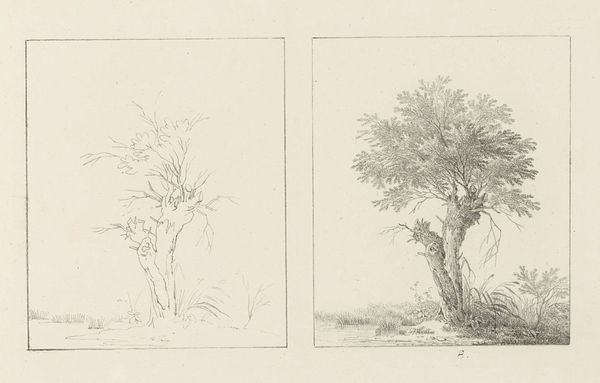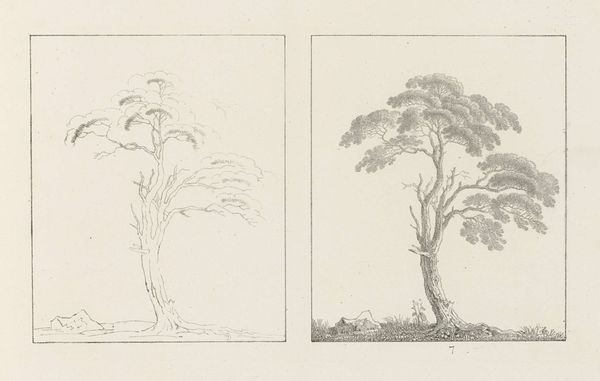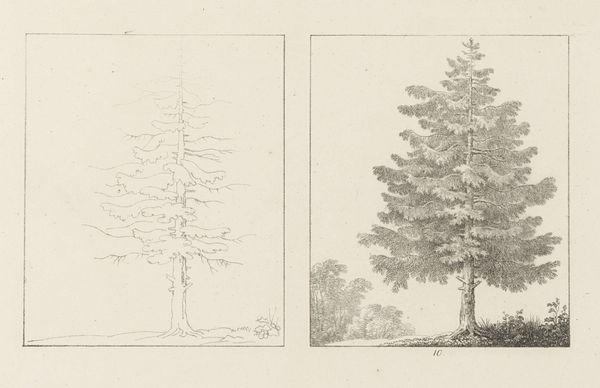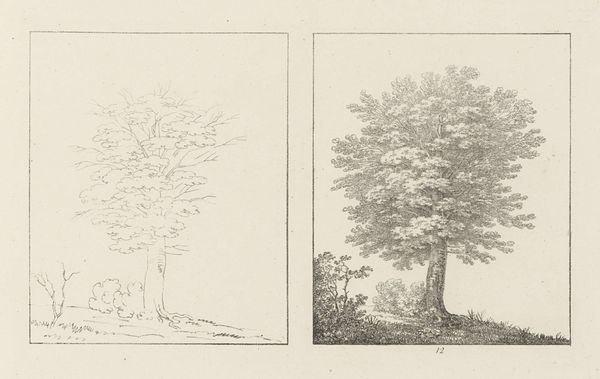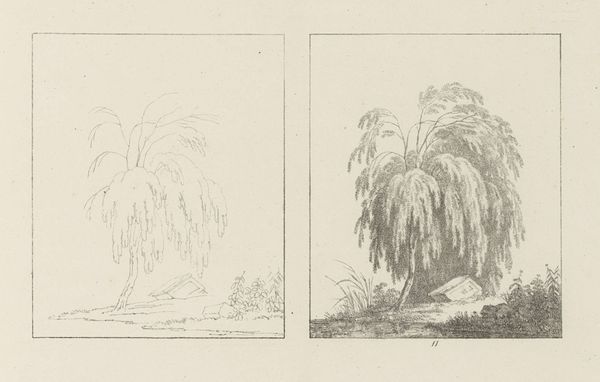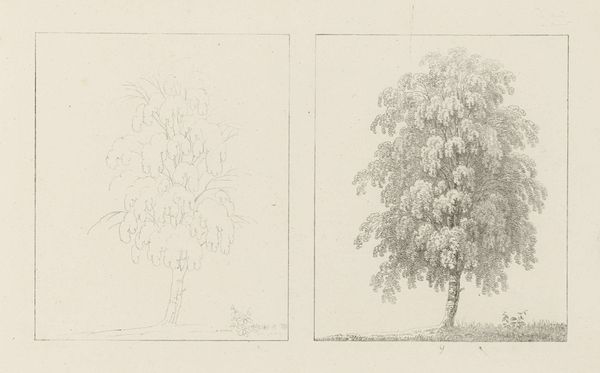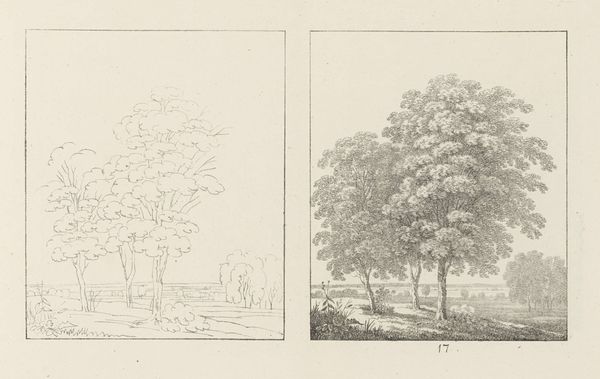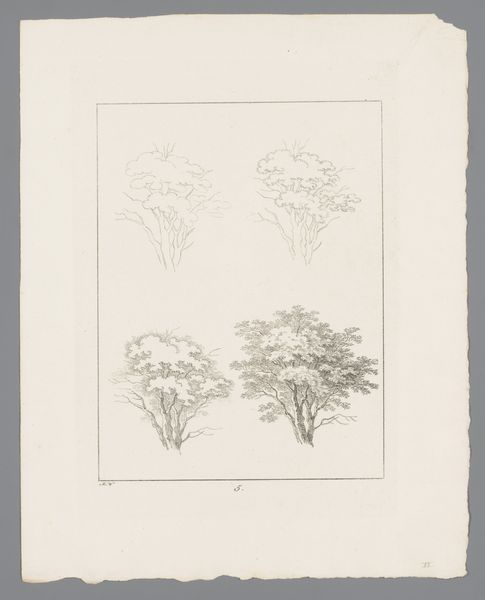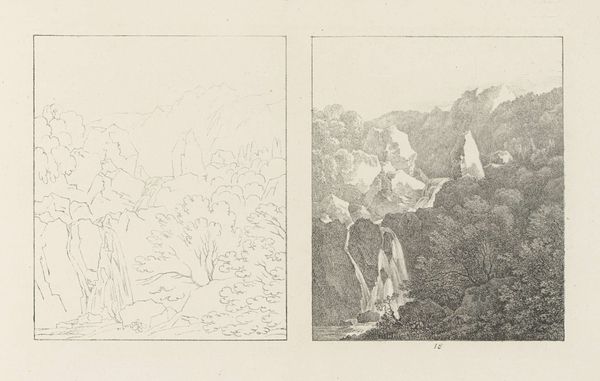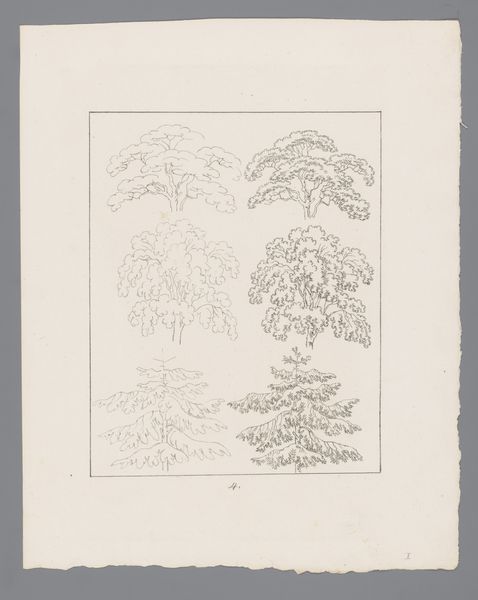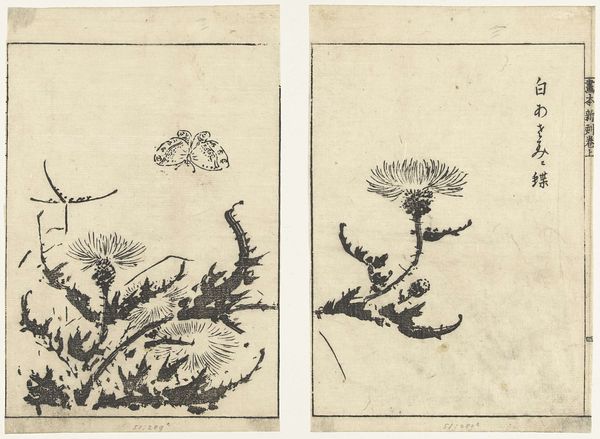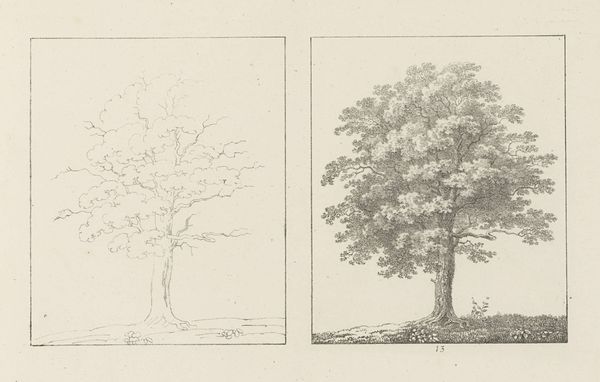
Albumblad met twee voorstellingen van verschillende soorten bomen: links het ontwerp, rechts de uitvoering 1816
0:00
0:00
drawing, etching, paper, ink, pencil
#
drawing
#
etching
#
landscape
#
classical-realism
#
etching
#
paper
#
ink line art
#
ink
#
pencil
#
line
#
academic-art
#
realism
Dimensions: height 317 mm, width 460 mm, height 205 mm, width 170 mm
Copyright: Rijks Museum: Open Domain
Editor: This is "Albumblad met twee voorstellingen van verschillende soorten bomen: links het ontwerp, rechts de uitvoering" by Max Josef Wagenbauer, created around 1816. It looks like pencil, ink and etching on paper. I’m really drawn to the comparative element; seeing the study on the left become the more defined rendering on the right. It’s kind of like peeking inside the artist's creative process. What stands out to you about this particular sheet? Curator: It's interesting, isn’t it? For me, beyond the technical skill, it evokes a sort of quiet observation. You can almost feel Wagenbauer patiently studying each tree, committing its essence to paper. The classical realism gives it a scientific quality, a botanist's eye trying to capture the individual character of each specimen, but also perhaps reflecting on life cycles – the sketch being the nascent form and the etching the full, realized one. Do you find the seemingly unemotional approach of the drawing contradicts the subjective expression of art? Editor: That's a fascinating way to look at it, seeing a life cycle captured. I initially felt the "academic-art" label might make it feel dry or overly technical. The comparison element highlights something interesting about different styles. Curator: Indeed! Perhaps the point isn't emotion, but understanding. Like a musician mastering scales before composing a symphony, Wagenbauer seems to be diligently cataloging the language of nature. Imagine him wandering through a forest, sketchbook in hand, losing himself in the minute details of bark and leaf. And consider, the landscape genre wasn't simply about replicating scenery; it was about imbuing it with meaning, with feeling. This almost clinical dissection allowed for the next artist's personalized engagement with nature to come through without any academic training. What kind of connection do you think artists who look at Wagenbauer's trees have to these academic drawings? Editor: That makes sense. By removing some of the immediate emotional response, we can focus on the underlying form, which, weirdly, opens up more possibilities for a later interpretation, almost inviting viewers to imprint their emotions *onto* that structure. I hadn't thought of it that way before! Curator: Precisely. Art often hides its true intention. This seemingly detached study opens doors for new conversations between humanity and nature, making it rather special after all. It allows for future engagement, and almost becomes timeless!
Comments
No comments
Be the first to comment and join the conversation on the ultimate creative platform.
